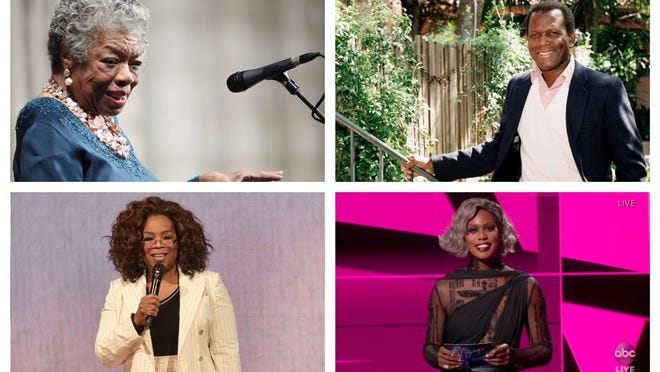February is Black History Month. A little history about how that came about before some facts about famous and successful black entertainers who laid the groundwork for many of those in today’s film and entertainment industry…
Carter G. Woodson was a scholar whose dedication to celebrating the historic contributions of Black people led to the establishment of Black History Month, marked every February since 1976. Originally set as a one-week celebration, President Gerald Ford extended the recognition to “honor the too-often neglected accomplishments of Black Americans in every area of endeavor throughout our history.”
Film historians may differ on the exact years of Hollywood’s golden age (it may have stretched from the late 1920s to either the 1950s or ’60s). What is clear is that these years weren’t always so golden for Black actors, who often struggled to earn opportunities and recognition. Despite the tough environment of those times, some gifted artists still made a name for themselves with standout performances as singers, dancers, comedians, and more, laying the groundwork for those following in their footsteps.
Interesting facts took a look back and highlighted these famous firsts (It is recommended that young people research these folks. The rest of us will remember them.): Hattie McDaniel was the first Black actor to earn an Academy Award as Best Supporting Actress for her role as Mammy in “Gone with the Wind.” Producer David O. Selznick reportedly had to intervene to allow her to accept her award in the segregated Los Angeles night club where the event was held. She later went on to make more history, taking over the lead role of “The Beulah Show” and became the first Black star of a radio program.
Two years after McDaniel’s historic win at the Oscars, Lena Horne, singer, actress, dancer and activist was the first Black actress to sign a long-term contract with a major Hollywood studio (MGM). Two standout movies in her career were “Cabin in the Sky” and “Stormy Weather.” While you are watching “Stormy Weather,” watch for the Nicholas Brothers in a famous dance number in the movie. The brothers had no formal dance training but spent their childhood following their musician parents performing the vaudeville circuit. The older brother, Fayard, watched vaudeville performers and taught his younger brother how to dance and sing. They went on to perform in many other high-profile movies with the likes of Gene Kelly and had long careers.
“Stormy Weather” was actor and dancer Bill “Bojangles” Robinson’s final film and was loosely based on his life story. Having started his career in the 19th century and becoming a vaudeville star by World War I, his performances for Hollywood found him dancing alongside Shirly Temple by the mid-1930s. Stormy Weather was able to shine a light on other Black talent such as Cab Callaway and Fats Waller, as well as the Nicholas Brothers.
Ethel Waters was the first Black performer to star in a television program. In 1939, the National Broadcasting Company (NBC) decided that the new and up and coming medium of television might respond well to a variety show. The result was that “The Ethel Waters Show” was a hit and made Waters a star. Waters was also the second Black woman to earn an Academy Award nomination for her performance in 1949’s “Pinky.”
No look back would be complete without recognition of a star who, although born in Miami, grew up in the Bahamas and became a beloved actor, Sidney Poitier. With his heavy Bahamian accent being a deterrent to roles, Portier spent his free time mimicking voices he heard on radio broadcasts. With improved diction and his natural charisma his career took off, allowing the creation of memorable roles in movies such as “A Raisin in the Sun,” “In the Heat of the Night,” “To Sir, with Love” and “Lillies of the Field,” which made Poitier the first Black actor to win the Best Actor Academy Award. History makes each and everyone!
Debbie Kulick is an EMT who writes a weekly news column for the Pocono Record.
